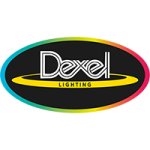
Flood lighting is a fundamental component of stage lighting design. Stage floodlight cast a large amount of light over a significant area, allowing the audience to see performers, props, and set elements clearly. These versatile fixtures can be used to implement various lighting techniques to enhance the visual impact of a performance. They are frequently employed for wash lighting, where a broad and even wash of light is used to cover specific areas of the stage. This technique is useful for setting the overall mood, creating a uniform background, or emphasizing particular scenes. RGB flood lighting bathes the stage in a specific color or a blend of colors to evoke different moods or complement the theme of a performance. Placing floodlights behind performers or set elements can create backlighting effects which help separate performers from the background, adds depth to the stage, and creates a visually appealing silhouette effect. Silhouetting is a dramatic technique where floodlights positioned behind performers cast their shadows on the stage, creating striking silhouettes. Floodlights can be focused on specific performers or areas of the stage to create highlights. This technique draws attention to key elements, such as lead actors or important scenes, while allowing other areas to remain in shadow. Cross lighting involves positioning floodlights on opposite sides of the stage, creating a crossbeam of light. This technique helps minimize shadows and provides even illumination across the stage, reducing the appearance of facial shadows on performers.
Different types of floodlights are used in stage lighting to achieve various effects, highlight performers, or illuminate specific areas of the stage. Cyc lights are designed to illuminate cycloramas or backdrops. They create a uniform wash of light across the entire background, allowing for color blending and mood setting. Cyc lights are typically arranged in a row to cover the full height of the cyc. Strip lights, also known as borderlights, are long, narrow fixtures often placed along the borders of the stage. They provide an even wash of light across the stage and are useful for creating a consistent background illumination. Strip lights come in various lengths and are often used in theater and stage productions. Blinders are intense, short-duration floodlights designed to produce a sudden burst of light. They are commonly used for creating dramatic effects, emphasizing certain moments, or enhancing the visual impact of specific scenes. Moving head wash lights are characterized by their ability to produce a wide, even wash of colored light and their capacity for movement and dynamic effects. PAR cans are known for their ability to produce a focused beam of light, and they are often used for front lighting, color washing, and creating intense beams. A combination of these floodlights is used to achieve the desired lighting effects, create mood, and highlight performers or specific areas of the stage.
LED flood lights have become a universal choice in stage lighting due to their numerous advantages. Their instant on/off capability is crucial for creating quick lighting changes during a performance and allows for precise control over lighting cues. The dimming capabilities of LED flood lights allows for dynamic adaptability throughout a performance. Smooth dimming is particularly beneficial for achieving seamless transitions between scenes in a performance. Tunable white LED fixtures can offer a range of color temperatures, typically spanning from warm tones (lower Kelvin values, e.g., 2700K) to cool tones (higher Kelvin values, e.g., 6500K). This ability allows stage lighting to adapt the stage lighting to different scenes, moods, or atmospheres. LED flood lights with RGB or RGBA color mixing capabilities are instrumental for lighting designers in creating a diverse range of colors, contributing to dynamic and vibrant lighting effects on stage. Digital addressable LED technology allows for precise control over each LED within the fixture, providing a high level of customization and flexibility in creating dynamic lighting effects for stage performances. Digital addressable LED flood lights can be used to create interactive performances where lighting responds dynamically to live events or audience participation. This adds an extra layer of engagement and excitement to the stage production.
The digital controllability and programmability of LED flood lights represent a technological advancement in stage lighting. LED flood lights can be programmed to follow specific lighting sequences or cues. The integration of LED flood lights with DMX protocols provides interoperability with other lighting fixtures, audiovisual components, and stage elements, allowing for a comprehensive and synchronized production. This is particularly valuable in stage productions where the lighting needs to synchronize with the overall performance. This synchronization enhances the overall coordination of the production, creating a more immersive and captivating experience for the audience. It ensures that multiple fixtures respond simultaneously to cues, creating coordinated and harmonized lighting effects. This coordination contributes to a seamless and polished presentation. The seamless integration of LED technology into advanced lighting control systems enable the programming of intricate lighting sequences, cues, and effects. Lighting cues can be precisely timed to align with other elements of the performance, such as changes in scenery, dialogue, or key moments in a theatrical production. The centralized control, programming capabilities, synchronization, and compatibility with industry standards bring a new level of sophistication to lighting design.



























